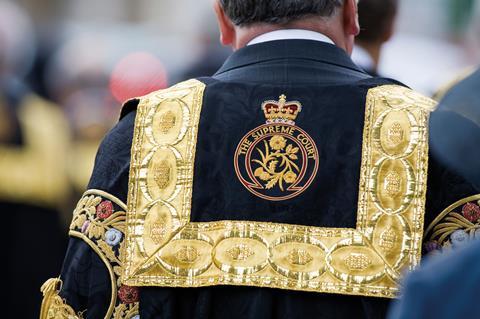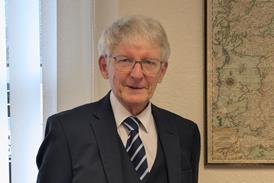Judicial Individuality on the UK Supreme Court
Lewis Graham
£85, Bloomsbury

Socrates is supposed to have said that a judge’s duties are ‘to hear courteously; to answer wisely; to consider soberly; and to decide impartially’. I have come across many judges who clearly aspire to those ideals. Judges, however, are human, and like all of us have their own values, preferences, heuristic biases, and eccentricities which affect their worldview. Until Elon Musk or his big-tech ilk manage to produce an AI judge that makes perfectly rational, just and objective decisions every time, one suspects the individual character of judges will inevitably have some role in decisions.
If different judges are likely to take different positions on the same case, who the judge is becomes a key issue. The US model – where federal judges are nominated by the president in line with his party’s ideology and then approved or rejected by the Senate, usually along party lines – illustrates this. In this work, Graham tries to measure the views of the judges who have sat on the UK Supreme Court over its first decade and determine how this affects their judgments.
Judges are human, and like all of us have their own values, preferences, heuristic biases, and eccentricities which affect their world view
Not being overly excited by statistics, unless Test cricket is involved, I nevertheless found Graham’s number-crunching and its conclusions fascinating. Some conclusions are not revelatory. The late Lord Kerr and Lady Hale tended to find in favour of claimants against public authorities and the ‘underdog’ where there were significant economic disparities between parties. This seems entirely in character. Some, however, are striking, such as Lord Mance and Lord Clarke voting to follow a disputed precedent more than 80% of the time in split judgments, or Lord Rodger’s surprising number of solo dissenting judgments.
However, it is Lord Kerr who comes across as the most fascinating of the court’s judges. Unwavering in his views, willing to dissent, but nevertheless respectful of precedent, whether one agrees with his politics or not he comes across as the Supreme Court’s most individual and principled thinker.
This work is a joy. The subject matter is interesting and – given the implications for the law and legal system – important. The final chapter, looking at what could be done to control the effects on judicial individuality on the law, makes it a book of wider policy interest.
James E Hurford is a solicitor at the Government Legal Department, London
Among the justifications advanced for the creation of the United Kingdom Supreme Court were greater transparency and visibility than was possible with the old House of Lords. Accompanying the undeniably increased physical profile created by the court’s new premises has been more public-facing activities by judges, chiefly speeches and memoirs, and more studies of judges themselves as well as their judgments.
A notable contribution to the latter literature is this book by Lewis Graham. Graham has compiled and analysed data about judicial voting patterns on the Supreme Court over its first 10 years (2009–2019), focusing on each individual judge’s contribution to each case. Among other things, he looks at which judges were likely to dissent, how long their judgments tended to be, who was more likely to allow appeals or side with certain parties such as the state, and who was more likely to find liability in various contexts, including tort, contract, crimes, EU law, immigration, tax and human rights cases.
He uses the data to draw conclusions about the individual judges, ascertaining whether they constitute ‘bold spirits’ or ‘timorous souls’ (adopting Lord Denning’s famous terminology), as well as deciding who was the most industrious and most influential.
It comes as no surprise that Lady Hale and Lord Neuberger were among the most prolific judgment-writers, or that Lord Brown was one of the more conservative. It is equally unsurprising that there are no strongly outlying figures – no avid dissenter in the Denning mould. Overall, Graham concludes (uncontroversially) that the court in the period under consideration could fairly be described as a conservative institution.
Graham’s research is impressive, but even so there remain areas of interest not covered. In particular, the judges’ specialities before elevation to the bench would be worth exploring further. Most spent time on the Court of Appeal hearing a range of subjects, but would still not have acquired expertise equivalent to that of a practitioner with decades in the field. A lifetime criminal law lord or lady would have to be very confident to disturb a decision reached by specialist shipping lawyers in an Admiralty law case, or vice versa.
Other aspects of judging are impossible for outsiders to know. For example, how much an individual judgment was altered by input from colleagues in discussions or from sharing drafts.
More research will therefore be welcome. In the meantime, this book provides interesting and valuable data and analysis.
James Wilson FRHistS is an independent legal author. His most recent book is Lord Denning: Life, Law and Legacy (Wildy, Simmonds & Hill, 2023)





























No comments yet